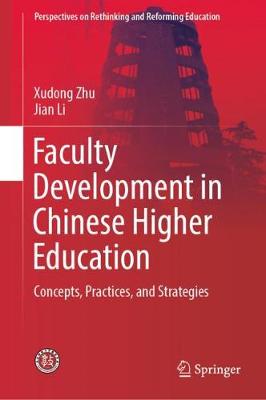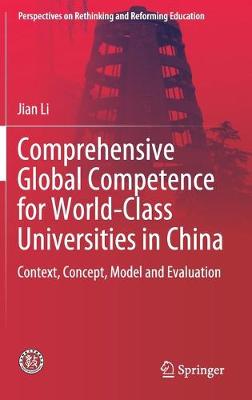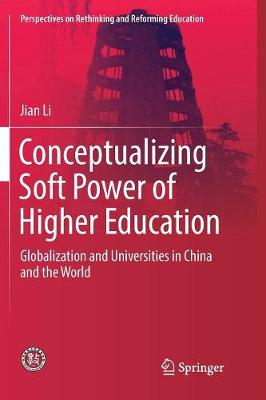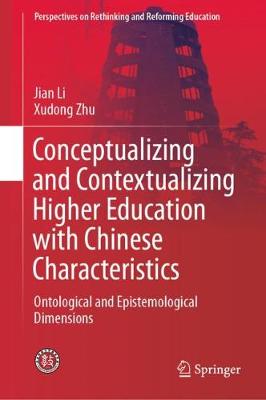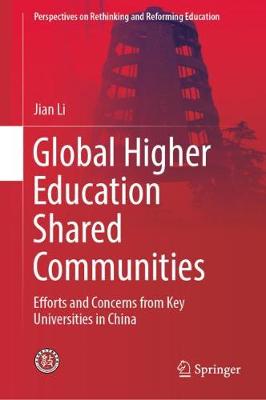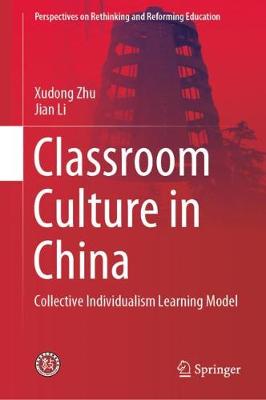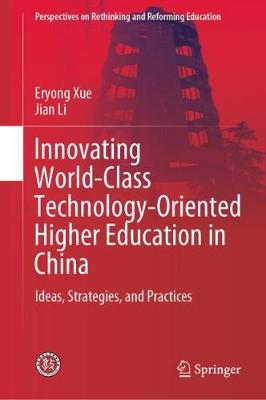Perspectives on Rethinking and Reforming Education
8 total works
Comprehensive Global Competence for World-Class Universities in China
by Jian Li
This book proposes the new concept of "comprehensive global competence" in order to explore how to advocate, cultivate, and implement global competence at China's higher education institutions. The concept essentially refers to an organizational, cross-cultural capacity involving students, faculty members, administrators, and staff in a multidimensional learning domain that values, shapes, and promotes global competitiveness at higher education institutions.
Unlike the other literature available, which has largely approached defining global competence it from four perspectives: an adaptation-change mode, an input-output mode, a willingness-tolerance mode, and a learning-competence mode, this book draws on the theoretical framework put forward in "Dimensions of Learning" (Marzano, 1992) in order to explain the meaning, implications, and justification of the concept of comprehensive global competence. Specifically, Marzano's Dimensions of Learning Model offers a comprehensive research-oriented framework on learning cognition and the learning process. With the help of this resource, the book discusses in detail the conceptual, practical, and strategic aspects of creating comprehensive global competence.
Also, this book provides innovative and unique viewpoints on conceptualizing and mapping the globalization and internationalization of higher education, especially for current Chinese higher education (1949-2016). It discusses and illustrates cutting-edge concepts of global higher education, such as global learning, global competency, and global citizenship and refines them in the conceptualized soft power conversion model of higher education.
This book reports on and enriches the theoretical concept of global education, and provides practical insights into global learning, global citizenship and global competency for Chinese undergraduate students.
This book examines the Chinese education policy landscape since 1978 by constructing a policy analysis tool, the "concept-added policy chain,"and discusses how to review, assess and forecast the development of that landscape, historically and contextually. In addition, it presentsseveral major historical educational policy shifts in order to explore both the internal and external rationale behind the development of aneducation policy with Chinese characteristics. It also provides a unique policy analysis tool for investigating the intricate political logics in contemporary Chinese education policy development at the macro-level, systematically and comprehensively.
Conceptualizing and Contextualizing Higher Education with Chinese Characteristics
by Jian Li and Xudong Zhu
The book is intended for scholars and researchers in the field of comparative higher education, administrators and stakeholders in education management and graduate students majoring in higher education.
Generally speaking, the book mainly conceptualizes and constructs a model of the specific type of globalization currently taking place at Chinese universities and colleges. As such, it offers a valuable resource for scholars and researchers who are interested and work in research on globalization in higher education from a comparative perspective; for administrators and stakeholders in Chinese higher education management; and for graduate students who are majoring or minoring in comparative higher education.
This book comprehensively examines classroom culture in the Chinese context and develops the model of "collective-individualism-based learning." Classroom culture plays a fundamental role in constructing students' learning competencies, perceptions, and behaviors. This book puts forward a collective-individualism-based learning model to explain the classroom culture in China, both past and present.
The collective-individualism-based model reflects the individualized learning style of students in Chinese classroom culture, and is characterized by nine symbolic objects; a textbook, an exercise book, a pen, a blackboard, a screen, a computer, a table, a chair, and a platform. In addition to summarizing this approach to learning, the book examines the construction of a classroom culture with Chinese characteristics and argues that the collective-individualism-based model accurately portrays the personal learning style of students in a specific classroom culture that includes particular symbolic objects.
Innovating World-Class Technology-Oriented Higher Education in China
by Eryong Xue and Jian Li
This book examines how to create world-class, technology-oriented innovation in higher education in China. It also proposes a model in response to the demand for promoting scientific and technological advances and technological innovation in the Chinese higher education system. Moreover, the book explores key concepts, pathways, models, policies, practices, trends and implications, and offers insights into fostering innovation in higher education. Lastly, it discusses how public policy theories can be applied to promote university technology transfer in order to create world-class universities in today's China.
